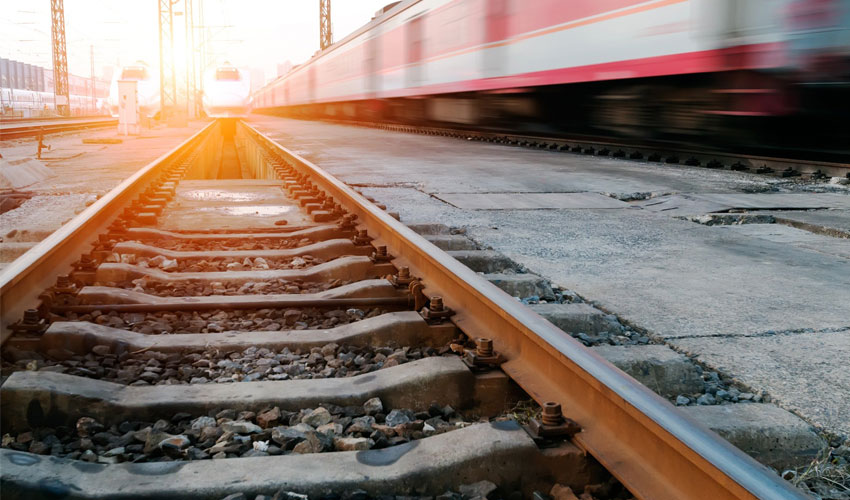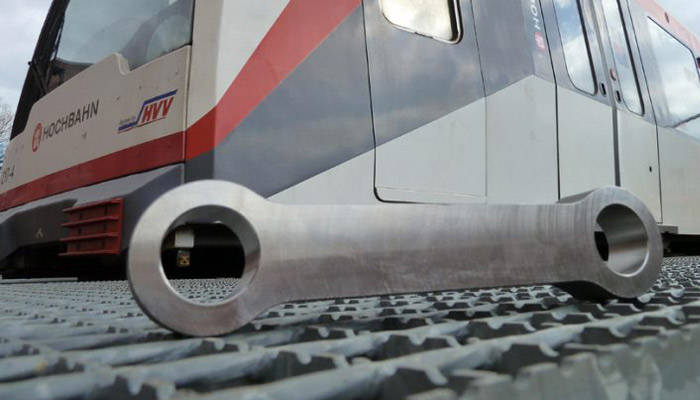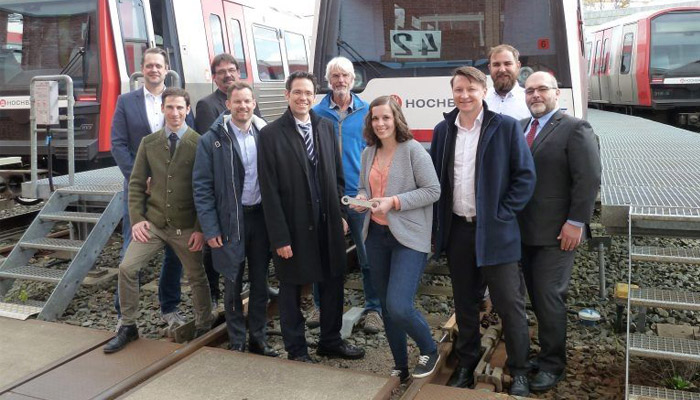The first 3D printed safety part for German railway

The German Mobility Goes Additive (MGA) network, whose objective is to explore the adoption of additive manufacturing in mobility, has just approved the first 3D printed safety-related component for the railway sector. This is a metal brake suspension link, successfully installed on a metro of the German company Hamburger Hochbahn AG. This is a real success for the MGA Approval Working Group, which was created in 2017 to obtain its first certification for the operational use of a highly sought-after and safety-relevant 3D printed component.
In the railway sector, additive manufacturing has gradually made way for itself and we are beginning to see more and more projects come to fruition: two weeks ago, we told you about Bombardier, which turned to Stratasys’ high-temperature solutions to design a custom ventilation system. Another example is Angel Trains, which has equipped some trains with 3D printed armrests, tables and handles. It is true that we are more concerned with less critical parts such as interior parts, which do not play a decisive role in the proper functioning of the train. This observation is changing with this news announced by MGA, which approved a 3D printed part essential to safety.

The approved 3D printed part | Credits: Mobility goes Additive e.V., 2019
A collaborative project around additive manufacturing
MGA has worked with many partners to obtain approval for this brake suspension link – for example, Siemens Mobility, which heads the Approval Group, Deutsche Bahn AG and the Fraunhofer Institute. It was TÜV SÜD that evaluated the necessary quality assurance procedures, tests and all the corresponding documentation. Finally, the part could be put into service in August 2019 after obtaining operational approval from the Hamburg Technical Supervisory Authority, in accordance with BOStrab, the German body that defines the rules for the design and operation of light rail vehicles.
It is not known which additive manufacturing technology or material has been used, but this is an important step for the railway sector, which could see a significant increase in the number of parts 3D printed and improve the performance of its trains. One example is maintenance, which could become more efficient if manufacturers can 3D print certified parts when they need them. BOStrab should establish a standard for future approvals of 3D printed parts. You can find more information in the official press release HERE.

The team behind this certification project | Credits: Mobility goes Additive
What do you think of the certification obtained for the railway sector? Let us know in a comment below or on our Facebook and Twitter pages! And remember to sign up for our free weekly Newsletter, to get all the latest news in 3D printing send straight to your inbox!






